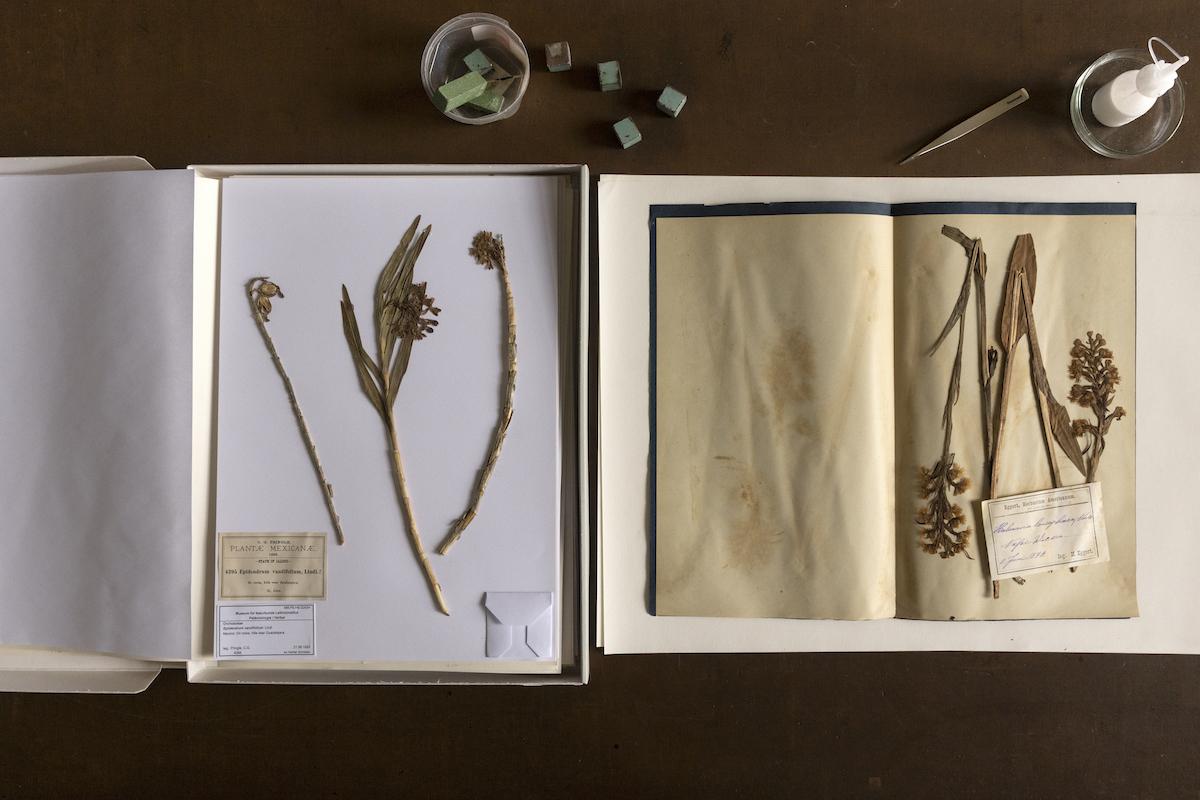For more than 150 years, around 45,000 pressed plant parts have been stored in a herbarium that was once compiled by the botanist Johann Schrader. Now the delicate specimens are being given a new lease of life: Over the next few years, they will be restored and digitized. Insights into a job that requires a great deal of care.
This article was first published in our journal For Nature (issue 8/2023).
The Schrader Herbarium has a long history; it was compiled by the botanist Dr. Johann Eduard Schrader from 1830 onwards. With 45,000 plant specimens, it is a rather small herbarium. But its quality is impressive and it covers almost all plant families in the world. It includes around 500 type specimens. Over the next between two and four years, the pressed plants will be restored and digitized with the support of the Potsdam-based company ArchivInForm. Collection keeper Angelika Haufe will carefully remove the plant parts from the old paper pages and mount them on acid-free paper.
A QR code and a new label are also added. "First we have to check whether the taxonomy, i.e. classification, is correct, because some new research results have led to changes in the family tree of the plant families," says Ludwig Luthardt, the collection scientist responsible for the herbarium. Around 5000 herbarium units have already been newly mounted. The museum team is being supported by external staff from the digitization company during the large-scale digitization process.
Finally, the digitized material will be available to all researchers in the museum's data portal – for the creation of plant geographic distribution maps, as a basis for biodiversity maps or simply to see if there is a plant in the Berlin collection for which genetic material is needed.
Text: Gesine Steiner
Picture: Pablo Castagnola
